Nestled in Northern Italy’s Lombardy region, Mantua is one of those magical places that seems to exist in its own peaceful bubble.
I discovered this gem last summer while exploring lesser-known Italian cities. Mantua is uniquely surrounded on three sides by artificial lakes created in the 12th century as part of the city’s defense system. This gives it a dreamlike quality that separates it from the bustling energy of Italy’s more famous destinations.
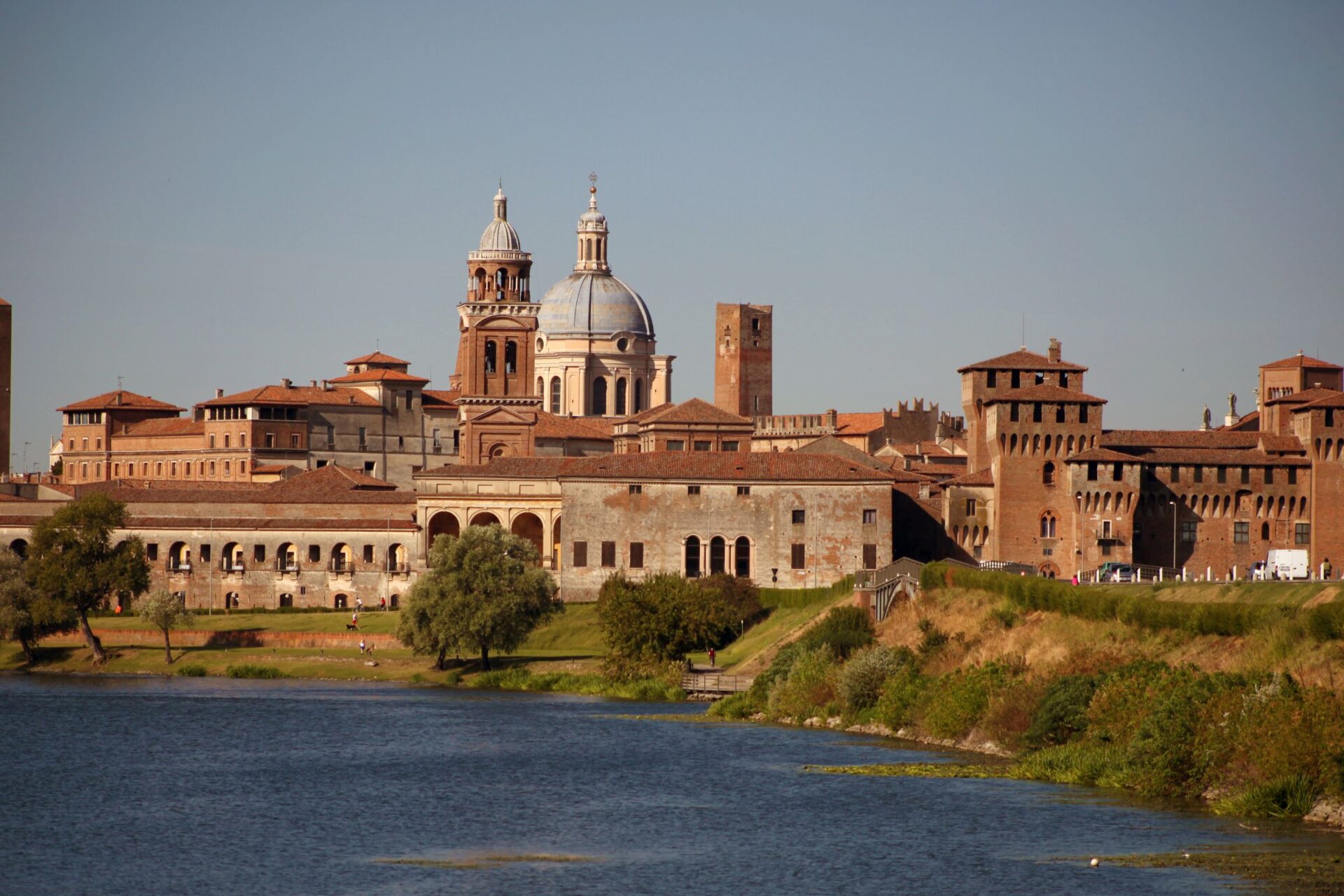
Walking along the 20 kilometers of lakeside paths that encircle the water, I was struck by how this Renaissance jewel remains relatively untouched by mass tourism.
The Gonzaga family transformed Mantua into a court-city of impressive opulence, leaving behind artistic treasures including works by Giulio Romano. Unlike Florence or Venice, here you can wander peaceful streets and admire architectural masterpieces without fighting through crowds.
The three lakes – formed by the Mincio River – create a natural moat that has helped preserve Mantua’s historical character.
I spent mornings sipping espresso in quiet piazzas and afternoons exploring the rich artistic heritage that earned the city its UNESCO World Heritage status. If you’re looking for authentic Italian culture without the tourist traps, this water-embraced city deserves a spot at the top of your travel list.
The Rich History of Mantua
Mantua’s history stretches back thousands of years, evolving from ancient settlements to becoming one of Italy’s most magnificent Renaissance courts under the Gonzaga family.
From Bronze Age to Gonzaga Dynasty
Mantua’s story begins in ancient times with Etruscan settlements along the Mincio River. Archaeological evidence shows Bronze Age communities thrived in this area, drawn to its natural protection from the surrounding waters.
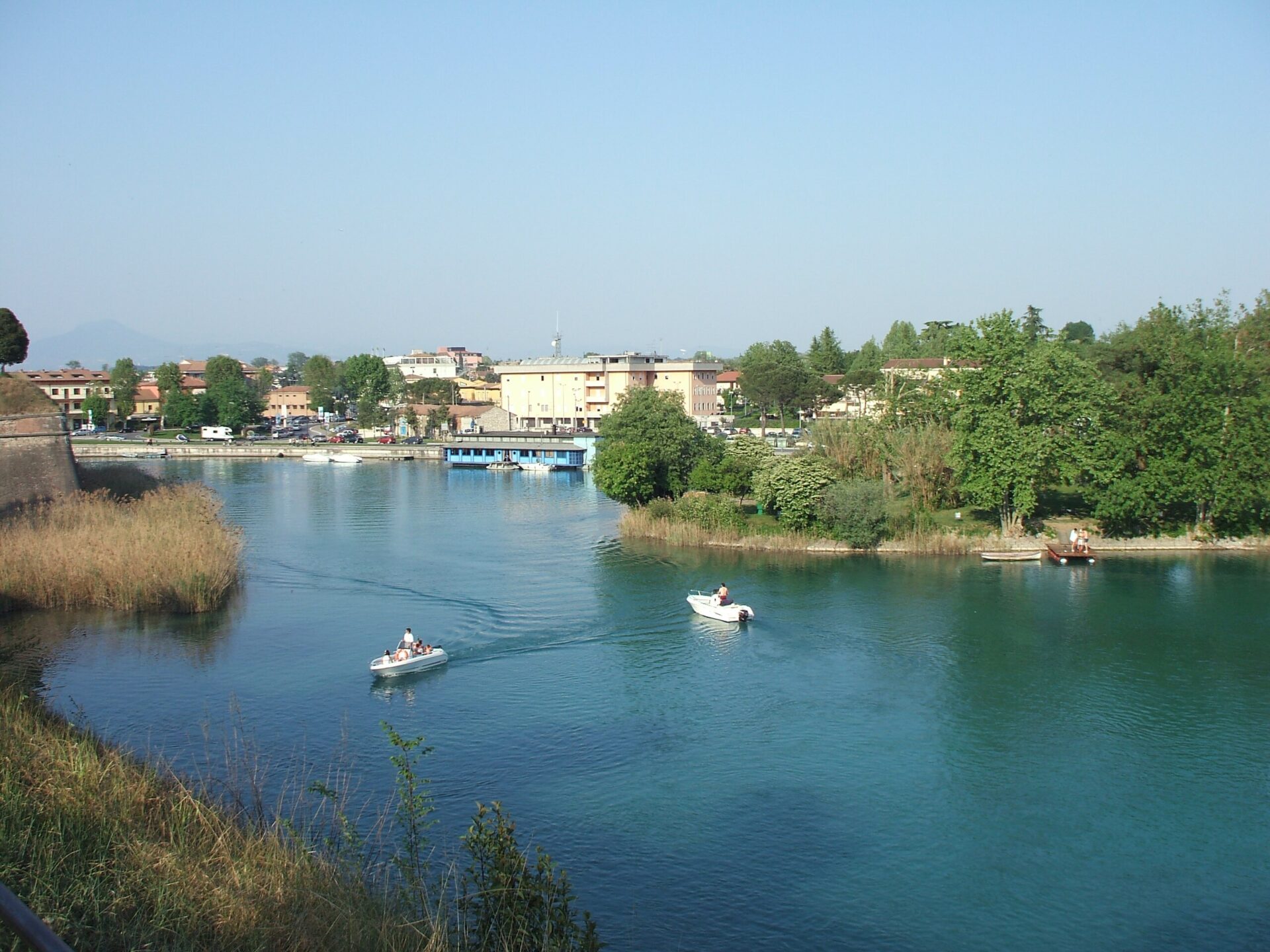
Image Source: Wikimedia Commons
Romans later developed the settlement, but Mantua truly began its rise to prominence during the Middle Ages. The city gained importance under Boniface of Canossa in the 11th century, whose family ruled as powerful feudal lords.
Everything changed in 1328 when the Gonzaga family seized control. Under their 400-year rule, Mantua transformed from a medieval commune into a dazzling Renaissance court-city. The Gonzagas were remarkable patrons of the arts, attracting brilliant minds like artist Andrea Mantegna and poet Virgil.
Mantua Under the Holy Roman Empire
The Gonzaga family ruled Mantua as a duchy within the Holy Roman Empire. This political connection proved crucial for the city’s development and protection.
In 1530, Emperor Charles V elevated Mantua’s status by making Federico II Gonzaga the first Duke of Mantua. This prestigious title strengthened the city’s position within European politics. The Gonzagas maintained close imperial ties while creating strategic marriages with other powerful families.
The city’s unique three-lake defensive system, created in the 12th century, helped maintain its independence during this period. These artificial lakes received water from the Mincio River, forming a natural moat around the city.
By the 18th century, Mantua fell under Austrian Habsburg control after the last Gonzaga duke died without an heir. Despite this change, the architectural and artistic legacy of Mantua’s golden age led to its recognition as a UNESCO World Heritage site in 2008.

Image Source: Wikimedia Commons
Exploring Mantua’s Architectural Wonders
Mantua’s skyline tells the story of its glorious past through magnificent buildings that blend Renaissance, Baroque, and Gothic styles. As I wandered through the city streets, I discovered architectural treasures that showcase the immense wealth and artistic patronage of the powerful Gonzaga family.
Palazzo Ducale and the Camera degli Sposi
The Palazzo Ducale stands as the crown jewel of Mantua’s architectural heritage. This massive complex contains over 500 rooms and spans 35,000 square meters, making it one of Italy’s largest palaces. I was awestruck by its sheer scale as I explored the elegant corridors and grand halls.
The palace’s most treasured space is the Camera degli Sposi (Bridal Chamber), painted by Andrea Mantegna between 1465-1474. The room’s ceiling creates an astonishing optical illusion with its oculus opening to a painted sky where cherubs and women peer down at visitors.
Walking through the Palazzo del Podestà section, I noticed how the building evolved over centuries, with each Gonzaga ruler adding their own architectural signature.
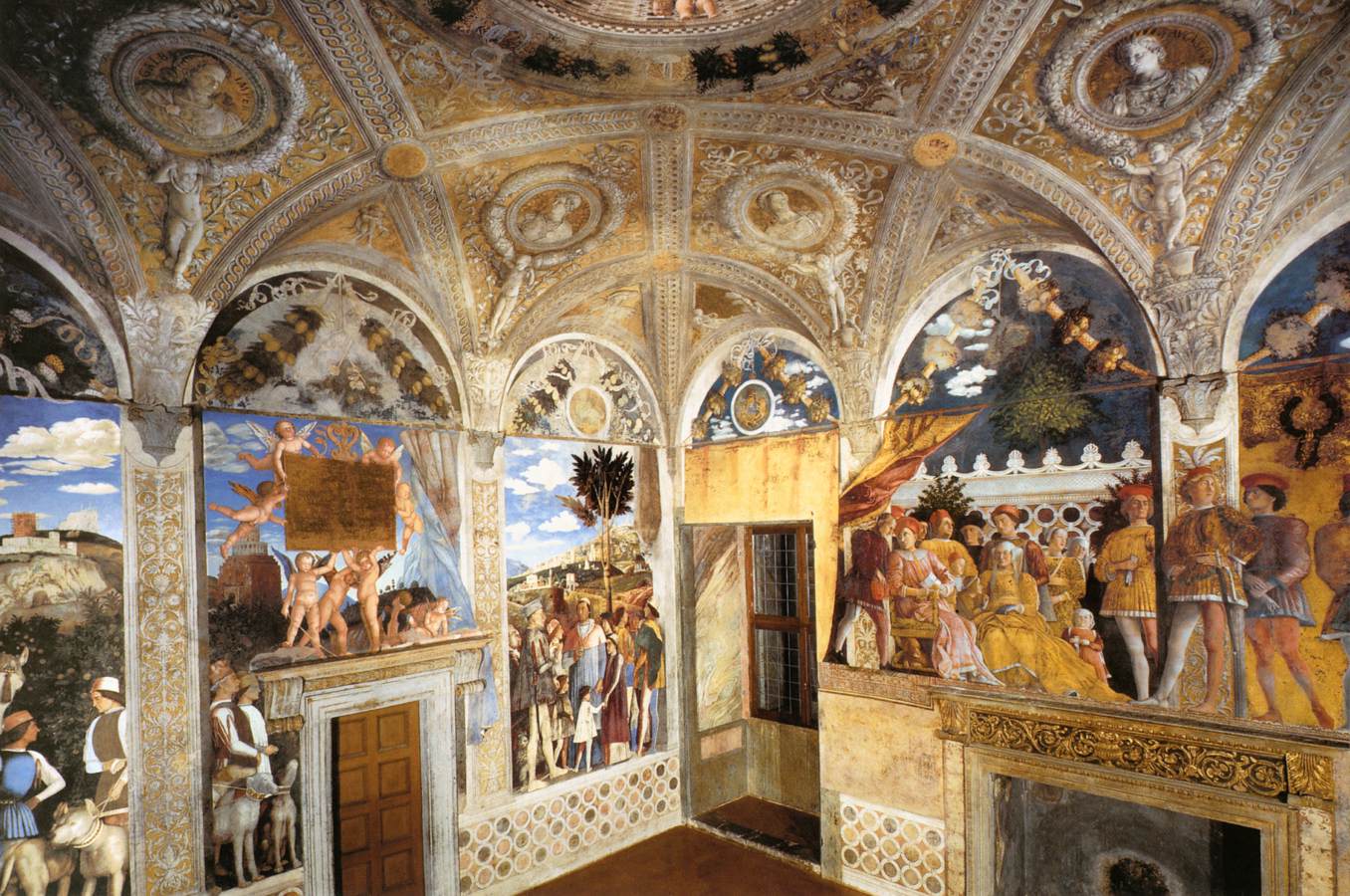
Image Source: Wikimedia Commons
Palazzo Te: Giulio Romano’s Masterpiece
Just outside the city center, I discovered Palazzo Te, a pleasure palace designed by Giulio Romano for Federico II Gonzaga between 1524-1534. Unlike the formal Palazzo Ducale, this suburban villa was built for leisure and entertainment.
The palace’s most extraordinary feature is the Sala dei Giganti (Hall of Giants). The room’s frescoes depict the fall of giants in Greek mythology with such dramatic force that I felt like I was inside the chaotic scene.
Romano’s playful architecture incorporates deliberate “mistakes” like slipping keystones and columns that appear to be falling. These elements create a sense of tension and surprise that was revolutionary for Renaissance architecture.
The Palazzo Te’s low, horizontal design connects seamlessly with its garden surroundings, offering peaceful views of one of Mantua’s lakes.
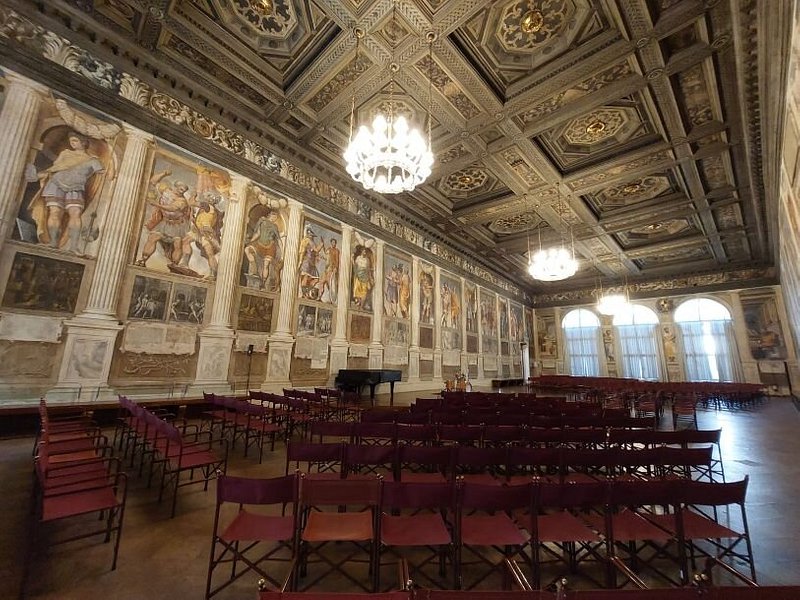
Image Source: Tripadvisor
The Water Identity: Lakes and Rivers
One of the most striking features of Mantua is its intricate relationship with water. The city sits embraced by three artificial lakes and is nourished by the flowing waters of the Mincio River, creating a unique landscape that has shaped both its history and identity.
The Creation of Mantua’s Artificial Lakes
Walking along Mantua’s shorelines, I’m always amazed that these lakes were actually man-made during the 12th century.
The three artificial lakes—Lago Superiore (Upper Lake), Lago di Mezzo (Middle Lake), and Lago Inferiore (Lower Lake)—were ingeniously designed as a defense system to protect the city.
These interconnected bodies of water surround Mantua on three sides, forming a natural moat that made the city nearly impregnable to attacks. The lakes receive their water from the Mincio River, creating a beautiful aquatic border that reflects the city’s historic buildings.
The largest of these, Lago Superiore, offers some of the most picturesque views I’ve found in Lombardy. From certain vantage points, it almost feels like Mantua is floating on water!
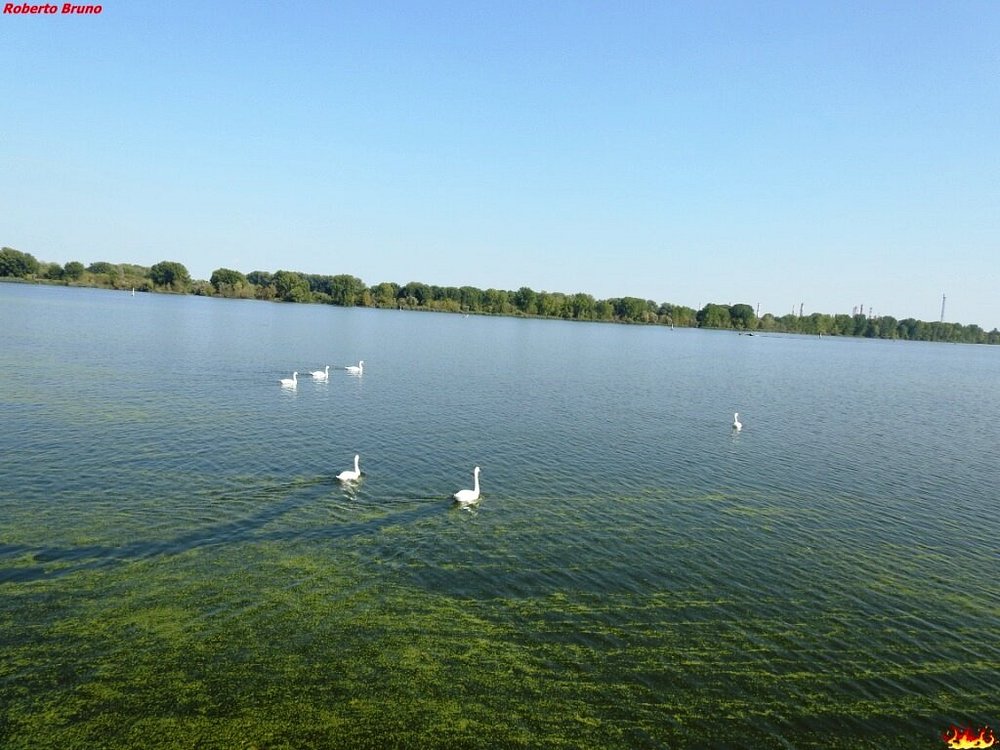
Image Source: Tripadvisor
The Mincio River: Mantua’s Lifeline
The Mincio River is truly Mantua’s lifeline. Flowing from Lake Garda to the north, it branches around the city, feeding the three lakes before eventually joining Italy’s longest river, the Po.
For centuries, this waterway has been crucial for trade, transportation, and the city’s prosperity. The Gonzaga family, who ruled Mantua for several centuries, leveraged the river to enhance their city’s prominence and wealth.
Today, I enjoy strolling along the river banks where locals fish, cycle, and enjoy the peaceful atmosphere. The Mincio creates unique marshy ecosystems that are home to diverse wildlife, especially water birds.
The river’s flow has been carefully managed throughout history with dams and channels, demonstrating the engineering prowess that has allowed Mantua to maintain its remarkable water identity for more than 800 years.
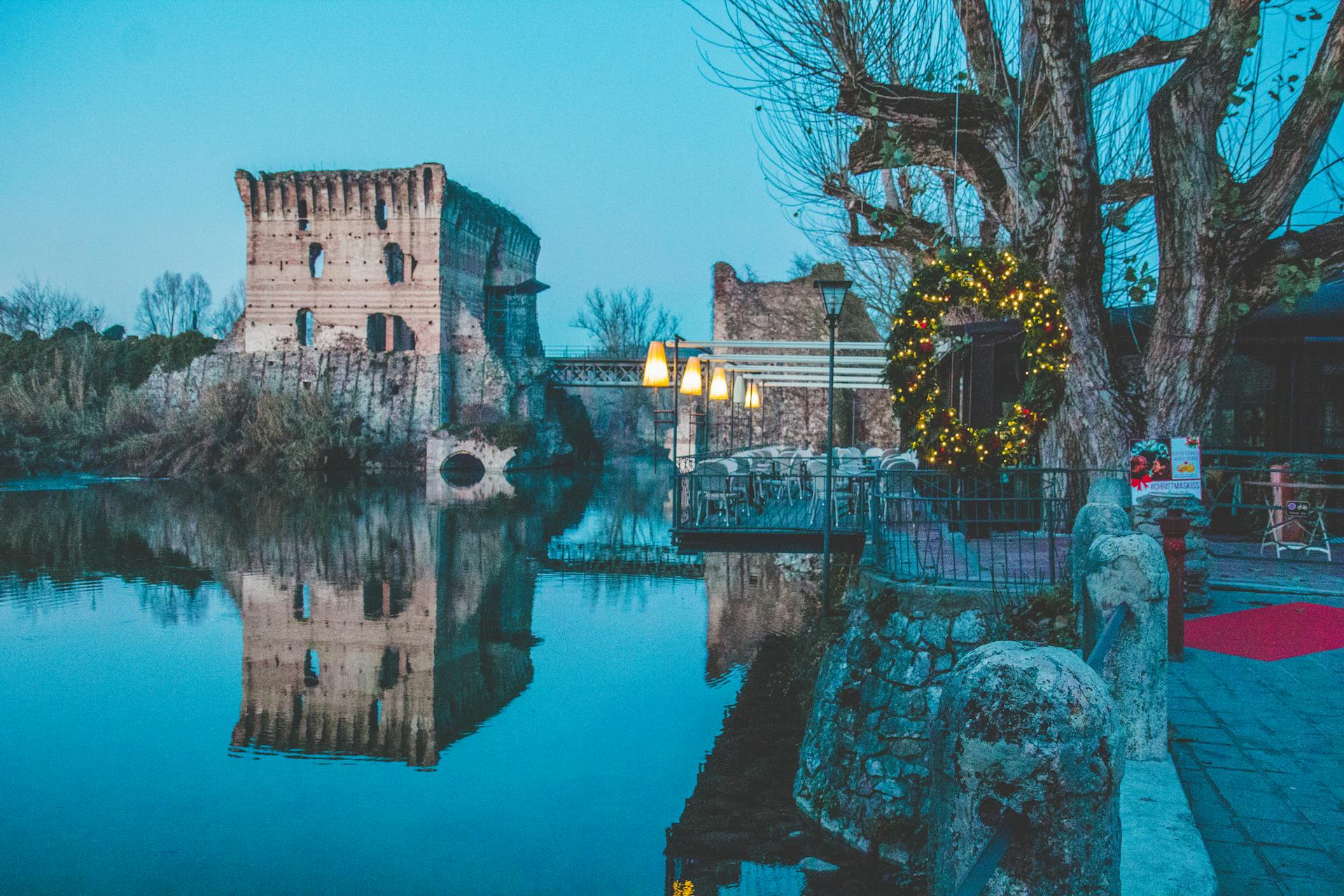
Mantuan Legacy in the Arts and Culture
Mantua’s cultural fingerprint extends far beyond its picturesque lakes and Renaissance cityscape. This northern Italian gem has played a pivotal role in shaping Western arts and literature for centuries.
Virgil’s Birthplace and Shakespeare’s Inspiration
Walking through Mantua’s cobbled streets, I’m constantly reminded that I’m treading the same paths as the great Roman poet Virgil, born near here in 70 BCE. The city proudly celebrates this connection with a statue and museum dedicated to him.
Shakespeare immortalized Mantua in “Romeo and Juliet,” choosing it as Romeo’s place of exile. The bard also set his play “The Two Gentlemen of Verona” partially in Mantua, cementing the city’s place in literary history.
What struck me most was how Mantua’s Renaissance atmosphere feels virtually unchanged since Shakespeare’s time. It’s easy to imagine the story’s tragic hero wandering these very streets, pining for his Juliet in nearby Verona.
Mantua: A Renaissance Art Hub
The artistic legacy of Mantua reached its peak under the Gonzaga family’s patronage. Their most remarkable contribution? Commissioning Andrea Mantegna as court painter in 1460.
Mantegna’s breathtaking Camera degli Sposi (Bridal Chamber) in the Ducal Palace features some of the most innovative frescoes of the Renaissance. Looking up at his ceiling oculus, I was amazed by the optical illusion creating a false opening to the sky.
The city became a significant musical hub during the Renaissance too. Monteverdi’s groundbreaking opera “L’Orfeo” premiered here in 1607, helping establish Mantua as a birthplace of modern opera.
The Bibiena Theater, with its bell-shaped design and stunning acoustics, remains a testament to Mantua’s musical importance. I found its intimate atmosphere perfect for experiencing performances much as audiences did centuries ago.
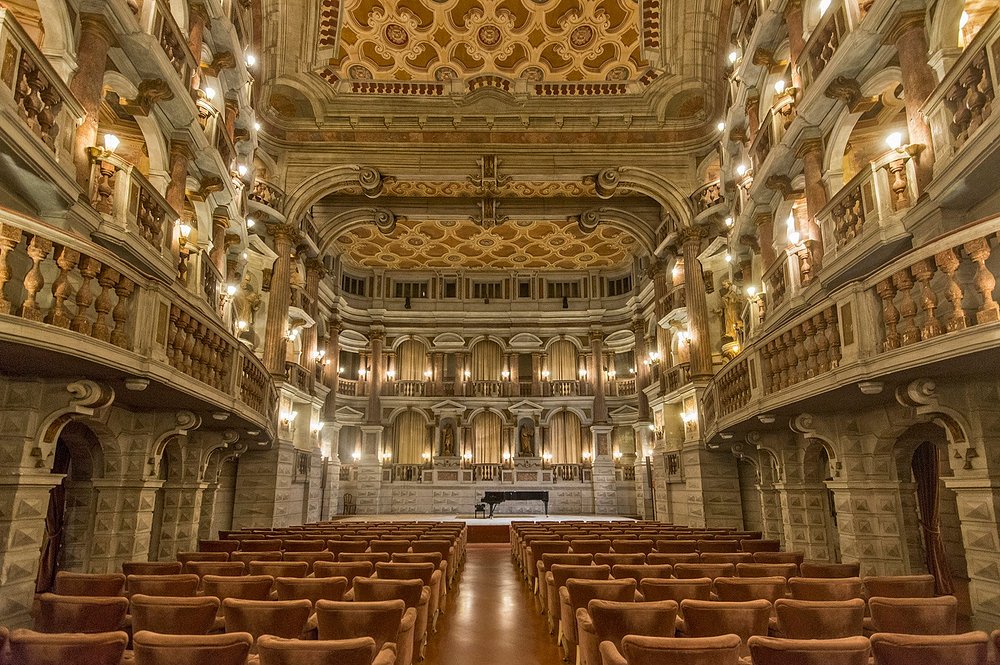
Image Source: Tripadvisor
Practical Travel Information for Mantua Visitors
Planning your trip to Mantua requires some thoughtful preparation, from navigating transportation options to finding the perfect places to eat and stay. This gem of Lombardy offers plenty of options that won’t overwhelm your travel plans.
Getting to and Around Mantua
The quickest way to reach Mantua is by flying into Verona Airport, just 33 kilometers away. I found this to be the most convenient entry point during my visit. From there, you can take a regional train or bus to Mantua.
If you’re already in Italy, trains connect Mantua to major cities like Milan, Venice, Turin, and Ferrara. The service is reliable and offers beautiful views of the countryside.
Within Mantua itself, walking is my favorite way to explore. The historic center is compact and pedestrian-friendly. I spent hours wandering between Piazza Sordello and Piazza Erbe without needing any transportation.
For trips to the surrounding lakes or nearby cities like Cremona and Piacenza, local buses are available. Renting a bicycle is another great option – the flat terrain makes cycling easy and enjoyable.
Top Spots for Dining and Accommodation
Mantua is a food lover’s paradise with its agricultural heritage shining through in local cuisine.
For authentic dining, I recommend restaurants near Piazza Erbe. Here, you can sample specialties like:
- Tortelli di zucca (pumpkin-filled pasta)
- Risotto alla pilota
- Sbrisolona (almond cake)

The area around Torre dell’Orologio offers charming cafés with outdoor seating. There, you can enjoy a cappuccino while admiring historic architecture.
For accommodation, I stayed in a boutique hotel near Palazzo del Capitano and found it perfectly located.
The city offers options for all budgets – from luxury hotels in renovated palazzos to family-run B&Bs. Many accommodations provide beautiful views of the three surrounding lakes.
For a special experience, look for places inside the ancient fortifications. They offer a unique glimpse into Mantua’s past as part of the Venetian Republic.

